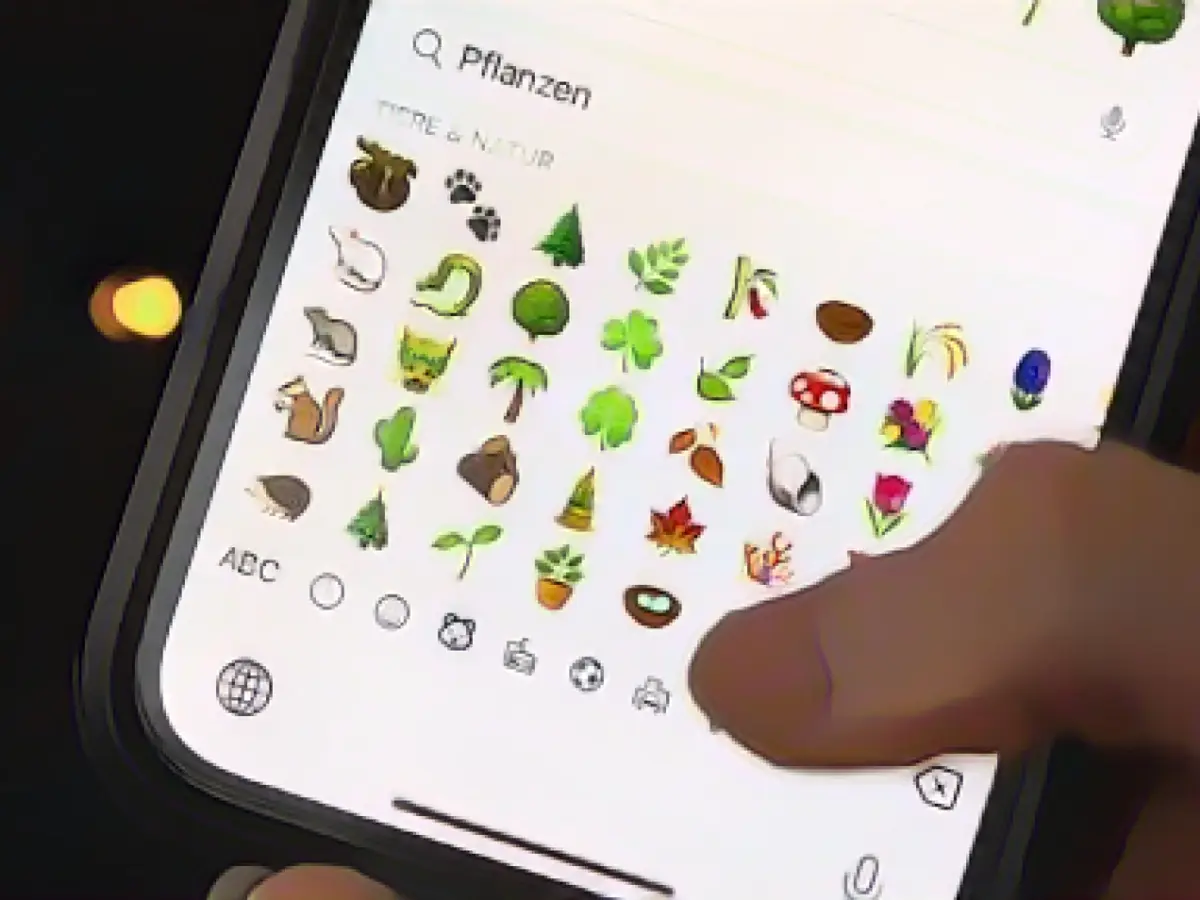Nature - Researchers: Emojis should better represent biodiversity
Pandas, foxes, sharks and even jellyfish and octopuses - a variety of animals can be represented by cell phone emojis. However, researchers believe that the biodiversity of these small digital images does not go far enough. The biodiversity of nature is not represented accurately enough, and some groups of animals and plants are severely underrepresented, as an Italian research team writes in the journal "iScience".
More diversity in nature emojis would sensitize people to the importance of species conservation, the biologists argue. "Even if the biodiversity crisis seems far removed from the online world, in our increasingly digitalized society we should not underestimate the potential of emojis to raise awareness and promote appreciation of the diversity of life on Earth," write the researchers led by Gentile Francesco Ficetola from the University of Milan.
For their study, they examined the so-called Emojipedia, an online reference work for emojis, and cataloged all images relating to animals, plants and nature. Their conclusion: animals are quite well represented, but plants, fungi and microorganisms are very poorly represented. But even among the animals, some groups are underrepresented or only superficially depicted. While there are numerous emojis for vertebrates, there is a lack of arthropods, such as insects, crustaceans and arachnids. This is despite the fact that there are many more species of arthropods than vertebrates in nature.
Too little social awareness of biodiversity
The research team counted emojis from 92 animals, 16 plants, one fungus (presumably the fly agaric) and one microorganism (presumably the intestinal bacterium Escherichia coli). In the case of animals, there is also an imbalance in the accuracy with which individual animals are depicted. Accordingly, there are emojis that clearly depict a bald eagle or a giant panda. Other animal species are only depicted in a very simplified way, such as ants, fish and crocodiles.
According to the researchers, this bias is in line with the current lack of social awareness of biodiversity. For something to become an emoji, it usually has to be searched for on Google with a certain frequency. Only then are animals or plants added to the catalog at irregular intervals.
Over the past seven years, however, a slight change in the variety of emoji has been observed, according to the biologists. They examined the updates to Emojipedia for the period from 2015 to 2022. In 2015, there were only 45 animal emojis, whereas in 2022 there were 92. The number of plant emojis has also increased.
Read also:
- This will change in December
- Attacks on ships in the Red Sea: shipping companies avoid important trade route
- German activists speak out in Dubai on suffering in Israel and the Gaza Strip
- Despite UN vote: fighting between Israel and Hamas in the Gaza Strip continues
- The research team from Italy identified a lack of representation of plants, fungi, and microorganisms in the Emojipedia, alongside underrepresented animal groups such as arthropods.
- The study found that while vertebrates have numerous emojis, arthropods, like insects, crustaceans, and arachnids, are still poorly represented due to a lack of social awareness about biodiversity.
- Despite the existence of emojis for animals like pandas and bald eagles, other species, such as ants, fish, and crocodiles, are only depicted in a simplified manner, showing the current bias towards popular animals.
- According to the researchers, the process for an animal or plant to become an emoji is influenced by its search frequency on Google, indicating that social awareness plays a significant role in emoji selection.
- The scientists observed a slight increase in emoji variety over the past seven years, with 45 animal emojis in 2015 and 92 in 2022.
- This growth in diversity, although positive, reveals an ongoing opportunity to improve and expand the biodiversity representation in digital platforms, such as cell phone emojis, further promoting nature appreciation and conservation efforts.
Source: www.stern.de







